
Rotary International is one of the largest service organizations in the world. The mission of Rotary, as stated on its website, is to "provide service to others, promote integrity, and advance world understanding, goodwill, and peace through [the] fellowship of business, professional, and community leaders". It is a non-political and non-religious organization. Membership is by application or invitation and based on various social factors. There are over 46,000 member clubs worldwide, with a membership of 1.4 million individuals, known as Rotary members.

Bernard Ralph Maybeck was an American architect in the Arts and Crafts Movement of the early 20th century. He was an instructor at University of California, Berkeley. Most of his major buildings were in the San Francisco Bay Area.
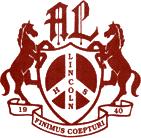
Abraham Lincoln High School (ALHS) is a California Distinguished public high school located in the Sunset District of San Francisco, California. In 2018, ALHS was ranked #499 and earned a gold medal by U.S. News & World Report, placing it in the top 2% of public high schools nationally.

Mission High School is a public high school in the San Francisco Unified School District (SFUSD) San Francisco, California.

Mechanics' Institute is a historic membership library, cultural event center, and chess club housed at 57 Post Street, San Francisco, California. It was founded in 1854 as a mechanics' institute, an educational and cultural institution to serve the vocational needs of out-of-work gold miners. Today the Institute serves readers, writers, downtown employees, students, film lovers, chess players, and others in search of learning and a community for the exchange of ideas.

Edward Verne Roberts was an American activist. He was the first wheelchair user to attend the University of California, Berkeley. He was a pioneering leader of the disability rights movement.
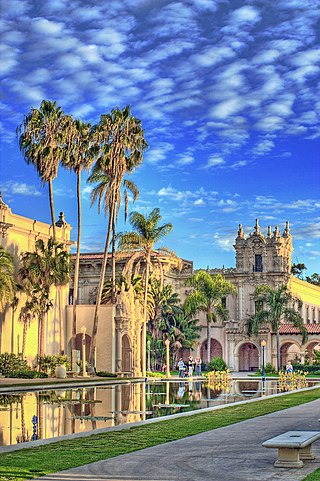
The California Pacific International Exposition was an exposition held in San Diego, California during May 29, 1935–November 11, 1935 and February 12, 1936–September 9, 1936. The exposition was held in Balboa Park, San Diego's large central urban park, which had also been the site of the earlier Panama-California Exposition in 1915.

The California School for the Blind is a public educational institution for blind children, K-12, located in Fremont, California. Its campus is located next to the California School for the Deaf.

Timothy Ludwig Pflueger was an architect, interior designer and architectural lighting designer in the San Francisco Bay Area in the first half of the 20th century. Together with James R. Miller, Pflueger designed some of the leading skyscrapers and movie theaters in San Francisco in the 1920s, and his works featured art by challenging new artists such as Ralph Stackpole and Diego Rivera. Rather than breaking new ground with his designs, Pflueger captured the spirit of the times and refined it, adding a distinct personal flair. His work influenced later architects such as Pietro Belluschi.
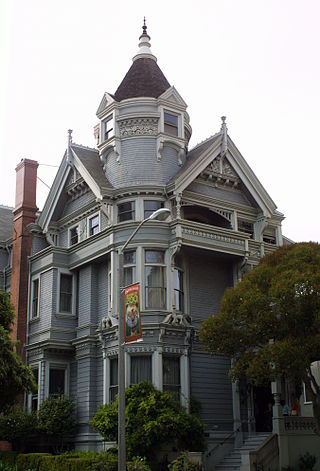
The Haas–Lilienthal House is a historic building located at 2007 Franklin Street in San Francisco, California, United States, within the Pacific Heights neighborhood. Built in 1886 for William and Bertha Haas, it survived the 1906 San Francisco earthquake and subsequent fire. The Victorian era house is a San Francisco Designated Landmark and is listed on the U.S. National Register of Historic Places. It was converted into a museum with period furniture and artifacts, which as of 2016 received over 6,500 visitors annually.

The Bush Street Temple is a former Orthodox Jewish congregation and synagogue, and former Buddhist temple, located at 1881 Bush Street in San Francisco, California, in the United States. The building has also been used as a Baptist church, and, since 2003, was repurposed as an aged care residential facility. At various stages between 1936 and 1994, the building was occasionally used by the San Francisco Go Club. The building, completed in 1895, was listed as a San Francisco Designated Landmark on April 18, 1976.

The James C. Flood Mansion is a historic mansion at 1000 California Street, atop Nob Hill in San Francisco, California, USA. Now home of the Pacific-Union Club, it was built in 1886 as the townhouse for James C. Flood, a 19th-century silver baron. It was the first brownstone building west of the Mississippi River, and the only mansion on Nob Hill to structurally survive the 1906 San Francisco earthquake and fire. It was declared a National Historic Landmark in 1966.

Albert Pissis (1852–1914) was a prolific Mexican-born American architect, of French and Mexican descent. He was active in San Francisco and had studied at the École des Beaux-Arts in Paris, France. He is credited with introducing the Beaux-Arts architectural style to San Francisco, California, designing a number of important buildings in the city in the years before and after the 1906 San Francisco earthquake.

The 50 United Nations Plaza Federal Office Building is a United States federal building located on United Nations Plaza between Hyde and McAllister Streets in San Francisco, California. The 1936 Neoclassical style building, designed by Arthur Brown, Jr., is listed on the National Register of Historic Places, and is a contributing property to the San Francisco Civic Center Historic District, which is a National Historic Landmark.
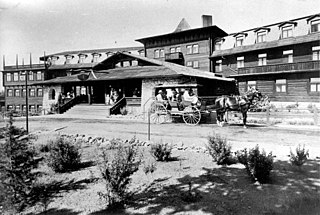
Charles Frederick Whittlesey (1867–1941) was an American architect best known for his work in the American southwest, and for pioneering work in reinforced concrete in California.

The Beach Chalet is a historic two-story Spanish Colonial Revival-style building, located at the far western end of Golden Gate Park in San Francisco. The building is owned by the San Francisco Recreation & Parks Department; and the tenants are the Beach Chalet Brewery and Restaurant, and the Park Chalet.

The Old San Francisco Mint is a building that served as the location of the San Francisco branch of the United States Mint from 1874 until 1937. The building is one of the few that survived the great 1906 San Francisco earthquake and resulting fire. It was designated a National Historic Landmark in 1961, and as a California Historical Landmark in 1974.
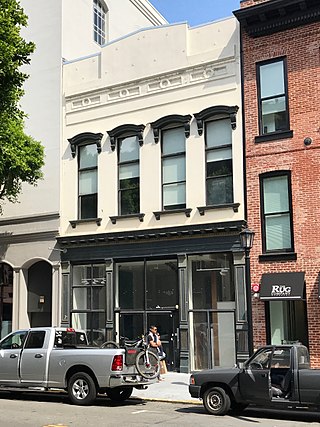
Golden Era Building, formerly known as the Call Building, is a historic commercial building built in 1852 during the California Gold Rush, and located at 732-734 Montgomery Street in the Jackson Square area of San Francisco, California.

Casebolt House is a historic residence in the Cow Hollow district of San Francisco, California, U.S.. It is the oldest house in the neighborhood, built in c. 1865. It is a San Francisco designated landmark since 1973.





















